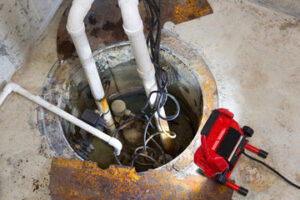In return for premium payments, life insurance companies promise to pay a pre-decided amount to beneficiaries after the policyholder’s death. These benefits can help ease financial burdens for grieving loved ones.

A top-rated company should provide a wide range of coverage options. Other important factors include customer service and financial stability ratings. Contact Life Insurance Companies Las Vegas for professional help.
Life insurance is a type of financial product that pays out a lump sum, or death benefit, to your beneficiaries in the event of your death. The purpose of the payout is to provide your loved ones with the money they need to cover expenses and replace income. Depending on your policy, it may also pay for debts and funeral costs. It is important to consider your family’s financial situation before deciding whether or not you need a life insurance policy.
There are many different types of life insurance policies, and each one is designed to meet the needs of specific groups of people. Some are more expensive than others, but most can be tailored to meet your needs. Some companies offer life insurance without a medical exam, which can be beneficial for those with health conditions that prevent them from getting coverage through traditional underwriting.
The main differences between life insurance policies are the length of coverage, the amount of the death benefit, and the premium. Term policies provide protection for a limited period of time and are often the cheapest options. Those who need permanent life insurance can choose from whole, variable, or universal life insurance. Permanent policies can have cash value, which builds over time and can be withdrawn or used to reduce the premium.
Some life insurance policies include riders that allow you to add extra coverage or customize your policy. It is important to look for a company that offers these riders and can explain how they work. You should also check the company’s customer satisfaction rating from third-party sources like J.D. Power and look for a high credit-rating from independent agencies like AM Best.
If you want to buy a life insurance policy, it is essential to find a company that is financially strong and has low customer complaints. If a company has too many complaints, it can affect your ability to file a claim. Moreover, a high complaint rate can also cause problems with the underwriting process and increase your life insurance rates. A good way to avoid this problem is to purchase a policy from a company that underwrites its own products.
It pays a death benefit
Purchasing life insurance provides your loved ones with a safety net in the event of your death. The death benefit is a lump sum of money that can help your family with any immediate financial burdens that may arise in the aftermath of your death. It can cover funeral expenses, outstanding debts, and monthly bills. Choosing the right policy will depend on your budget, ongoing financial needs, and the number of people you want to support with the death benefit. A financial advisor can help you choose the appropriate amount of coverage.
A beneficiary is the person you name on your life insurance policy to receive your death benefit in the event of your death. It is important to update your beneficiaries regularly, especially around major life events. This will prevent your beneficiaries from having to contest who is entitled to the payout.
You can also change your beneficiaries at any time, but you must provide a new beneficiary form to the insurer. This form should include the name and address of the new beneficiary, along with their Social Security number. You can find the form in your insurance provider’s documents or online. Then, submit the form with a certified copy of your loved one’s death certificate and other required paperwork.
If you’re the beneficiary of a life insurance policy, it’s best to contact the insurer immediately after the insured person’s death. Then, you can complete a short claims form. The insurer will confirm the death (and that it was covered under the policy-suicide or a death related to illegal activities are usually not covered). After your claim is approved, you’ll receive your death benefit in the form of a check.
A life insurance death benefit can be a great gift for your family, but you should make sure you’re buying from a reputable life insurance company. It’s a good idea to assess the company’s financial stability by checking its ratings from third-party agencies, such as AM Best, Standard & Poor’s, Fitch, or Moody’s. A higher rating means the company has a better history of paying out death benefits.
It can be a loan
Whether you need money for a medical bill or to pay off your credit card, life insurance loans can be an attractive alternative to other forms of financing. But before you take out a loan against your life insurance, be sure to exercise due diligence and understand the risks involved. You should also consult with your insurance company about how a policy loan will impact the components of your life insurance. You should ask for an in-force policy illustration, which will show how the loan will affect each component of your policy.
The process for obtaining a loan from your life insurance provider can vary by company, but it’s generally straightforward. You’ll need to verify that your policy includes a borrowing provision and that the cash value component has accumulated to the minimum amount required for a loan. Depending on the type of policy and its rules, it could take several years for your life insurance to build up enough cash value to qualify you for a loan.
Once you’ve established that your policy is eligible for a loan, you can complete the process by completing the required paperwork and signing a loan agreement. The insurance company will then deposit the funds into your account. Most life insurance loans have comparatively low interest rates and do not require a credit check or employer and income verification, which can make them an appealing alternative to traditional loans. However, if you don’t repay the loan balance within a certain timeframe, you may face a tax penalty.
Repayment of a life insurance policy loan is simple. It can be done in one of three ways: by paying the insurance company directly, using the borrowed amount to purchase a new policy or by drawing on the policy’s cash value. In the latter two scenarios, a portion of the death benefit will be reduced to pay off the loan balance, so you’ll want to ensure that you have an adequate level of life insurance coverage to cover any remaining debt.
The simplest way to repay a policy loan is by paying it off in full. This increases the policy account value and death benefit on a dollar-for-dollar basis and prevents the borrower from accruing significant interest.
It can be a contract
A life insurance policy is a contract between an insurer and the insured. The insurer promises to pay a lump sum to the beneficiaries in the event of death of the insured, in exchange for premiums paid by the insured. Life insurance is an effective way to secure your family’s financial future in the event of your death or injury. There are many different kinds of policies, and each has its own specific requirements. If you want to purchase a life insurance policy, you can get a rate quote online or call an agent. Some companies may require you to undergo a medical exam, which can be done at home or in an office. Some companies also offer no-exam life insurance for people who qualify.
A person who owns a life insurance policy is called the Policyowner, and may be an individual or a business entity such as a partnership or corporation. Some policies allow the policyowner to change clauses and provisions by submitting an endorsement. An endorsement is usually called a rider. Policyholders can use riders to increase or decrease their coverage and to change the beneficiary.
The underwriting process determines whether the company will accept an applicant and how much to charge them for their life insurance premium. The underwriter considers several factors including age, sex, health, occupation and lifestyle habits. A company may reject an application if it finds that the applicant poses a high risk due to health conditions or other reasons.
When the policyholder dies, the beneficiary receives a payout, which is typically the face value of the insurance policy. The payout can be in the form of a lump sum, monthly payments or an annuity. Some policies may have a savings element, which allows the policyholder to accumulate money in an account over time. These funds can be used to supplement the death benefit if needed. In addition, some policies may provide for a return of a portion of the premium paid by the policyholder at the end of the term.


